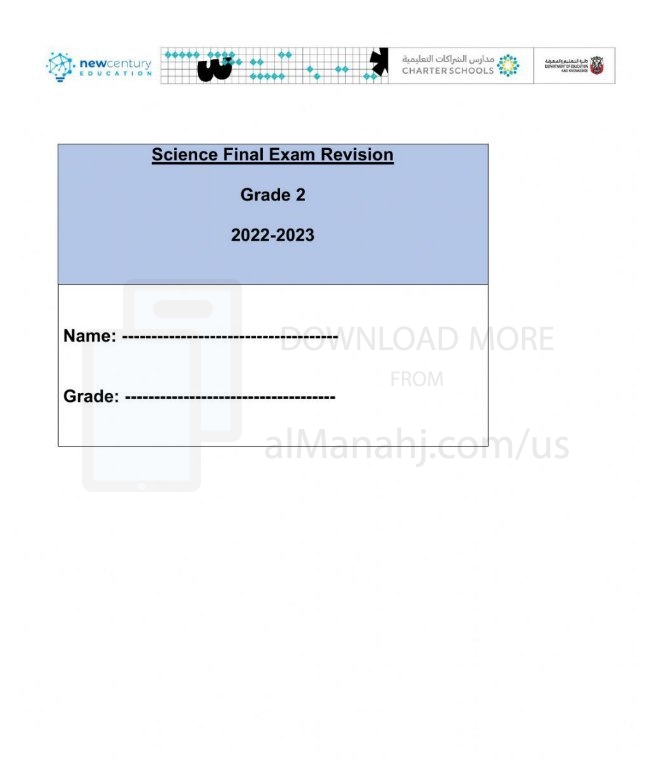| You are here: Almanahj Website ⇒ American curriculum ⇒ 2nd Grade ⇒ Geology ⇒ Term 1 | ||
|---|---|---|
Worksheet about Science review earth changes | ||
|---|---|---|
| Subject: Geology | ||
| 2nd Grade | ||
| Term 1 | ||
| Year: 2023/2024 | ||
| Size: 471.3KB | ||
| Number of clicks: 145 | ||
| Publish date:November 27, 2023 | ||
| Added by: Eman | ||
| Last download date: 2024-09-12 23:34:24 | By: theodor Sush2688 | |
| File info: Earth changes refer to various natural processes and events that alter the Earth's physical and environmental conditions. These changes can occur over short or long time scales and have significant impacts on the planet and its inhabitants. Here is a review of some key Earth changes: 1. Plate Tectonics: Plate tectonics is the scientific theory that explains the movement of Earth's lithospheric plates. The Earth's crust is divided into several large plates that float and move on the semi-fluid asthenosphere beneath them. The interactions between these plates give rise to earthquakes, volcanic activity, and the formation of mountain ranges. Plate tectonics also plays a role in the long-term geological evolution of the Earth's surface. 2. Earthquakes: Earthquakes are the result of sudden releases of energy in the Earth's crust, typically caused by the movement of tectonic plates. They can occur along plate boundaries or within the interior of plates. Earthquakes can range from minor tremors to major events that cause significant damage and loss of life. They can also trigger secondary hazards such as landslides and tsunamis. 3. Volcanic Activity: Volcanic activity is the result of molten rock (magma) rising to the Earth's surface. Volcanoes can be found both on land and underwater. When a volcano erupts, it releases gases, ash, and lava, which can reshape the landscape and affect local climates. Volcanic eruptions can be highly destructive, but volcanic soils also contribute to the fertility of surrounding areas. 4. Climate Change: Climate change refers to long-term shifts in global or regional climate patterns. It is primarily driven by natural processes and human activities that alter the composition of the atmosphere, leading to changes in temperature, precipitation, sea levels, and weather patterns. Climate change has far-reaching impacts on ecosystems, agriculture, water resources, and human societies. 5. Sea-Level Rise: Sea-level rise is a consequence of climate change and other factors such as thermal expansion of seawater and the melting of glaciers and ice caps. Rising sea levels pose risks to coastal areas, leading to increased coastal erosion, saltwater intrusion into freshwater sources, and the potential displacement of populations living in low-lying areas. 6. Glacial Retreat: Glacial retreat refers to the shrinking of glaciers and ice sheets worldwide. This is largely attributed to global warming and climate change. As glaciers melt, they contribute to sea-level rise and impact water availability in regions dependent on glacial runoff. Glacial retreat also affects ecosystems and can lead to the loss of habitats for various species. 7. Erosion and Weathering: Erosion is the process of wearing down and transporting materials such as soil and rock by wind, water, or ice. Weathering refers to the breakdown of rocks and minerals at or near the Earth's surface, often due to exposure to atmospheric agents. Erosion and weathering shape landforms, contribute to the formation of sedimentary deposits, and influence the distribution of soil and nutrients. Understanding and monitoring these Earth changes is crucial for scientific research, risk assessment, and the development of strategies to mitigate their impacts. Scientists from various fields, including geology, climatology, and ecology, study these processes to gain insights into the Earth's past, present, and future dynamics. | ||
| Downloading link Worksheet about Science review earth changes |
|---|
|
1701082770.pdf
The file is being prepared for download
|
| File images |
|---|
 |